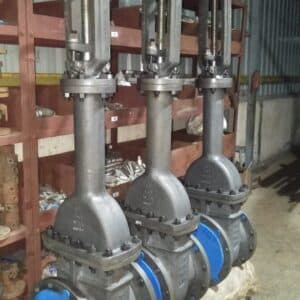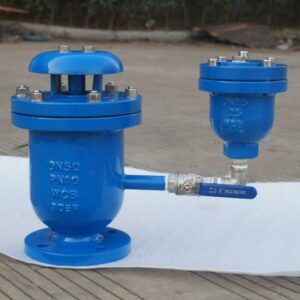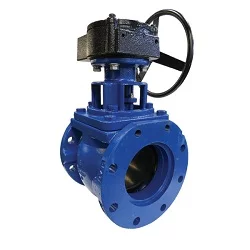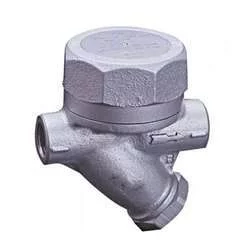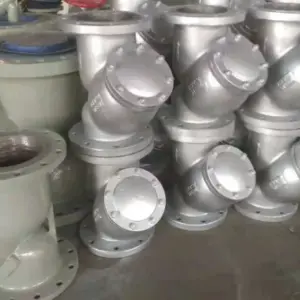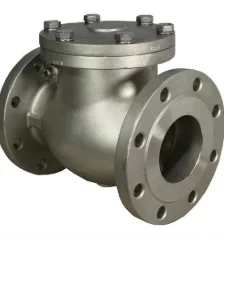Steam systems are indispensable in power generation, food processing, chemical production, and HVAC applications. However, for these systems to run safely and efficiently, steam and condensate control must be implemented correctly. That is where a steam trap is necessary.
In this Valves Only blog, we will discuss what a steam trap is, how it works, the different types, major functions, benefits, applications, and why selecting the appropriate steam trap from a trusty supplier is critical for your system performance.
What Is a Steam Trap?
A steam trap is an automatic valve that lets go of condensate (water), air, and non-condensable gases from a steam system without the escape of steam. It keeps steam systems filled with live steam for heat transfer and drains away unwanted condensate, which will decrease efficiency or damage.
Steam traps are generally installed in steam lines, heat exchangers, dryers, jackets, and other equipment through which steam is used for heating or mechanical energy.
How Does a Steam Trap Work?
The basic operation of a steam trap is to identify the difference between steam and condensate. As condensate is denser and cooler than steam, traps sense this and release it while holding the useful steam.
There are three main working principles behind the operation of steam traps:
1. Mechanical (Density-Based):
- These traps work using the principle of the difference in densities between condensate and steam.
- A float or bucket system rises or falls with the fluid level and opens or closes the valve in the process.
2. Thermodynamic (Velocity/Energy-Based):
- These traps use the principle of detecting the velocity and temperature difference between steam and condensate.
- A seat or disc mechanism opens upon condensate cooling the surrounding space and closes upon live steam detection.
3. Thermostatic (Temperature-Based):
- These operate on the principle of the temperature difference between steam and cold condensate.
- As condensate cools, a thermal element contracts, which opens the valve; it expands to close the valve when steam temperature is attained.
Functions of a Steam Trap:
Steam traps perform a number of important functions in steam systems:
- Automatic removal of condensate
- Prevent loss of steam, thus enhancing efficiency
- Remove air and non-condensable gases
- Ensure proper steam pressure for heat transfer
- Avoid water hammer, corrosion, and thermal stress on pipes
- Enhance energy efficiency and minimize operational cost
Types of Steam Traps:
There are various types of steam traps suited for particular working conditions:
- Most suitable for applications with continuous condensate flow
- Performs well in systems where pressure is varying
- Uses a floating and sinking bucket
- Durable and appropriate for high-pressure applications
3. Thermostatic Bimetallic Trap
- Takes advantage of differential temperatures using bimetallic strips
- Best used for delayed discharge in applications
- Works based on pressure variations through a disc
- Compact installation, operates with pulsating flow of steam
Each of the types is adapted to various uses based on environment, load, and steam pressure.
Benefits of Steam Trap:
- Energy Efficiency: Saves steam and enhances use of heat.
- Enhanced Equipment Life: Evades internal corrosion, water hammer, and thermal shock.
- No Manual Draining Required: No need for operator intervention to drain condensate.
- Environmental Advantage: Saves energy, hence reduces carbon footprint.
- Operational Safety: Ensures proper pressure and temperature in the system.
- Low Maintenance: Durable construction with extended periods between maintenance.
Applications of Steam Trap:
Steam traps are found in a large range of industries, such as:
- Power plants – in turbines and boilers
- Textile industry – in dryers and presses
- Chemical industry – in reactors, evaporators, and jacketed vessels
- HVAC systems – for space heating, air handlers, and humidifiers
Why Is a Steam Trap Essential in a Steam System?
A faulty steam trap can lead to:
- Wastage of steam and energy
- Flooding of equipment or steam lines
- Corrosion through retention of water
- Decreased process efficiency
- System shutdown on account of pressure problems
Therefore, selection of the correct steam trap and its maintenance are crucial for a cost-efficient and safe steam system.
How to Install a Steam Trap?
Install steam traps near the equipment they are to serve.
- Ensure the correct orientation (horizontal/vertical) according to the type of trap.
- Utilize maintenance access through isolation valves.
- Supply strainers before the trap to keep it clean from dirt.
- Utilize test valves or sight glasses to observe performance.
Why Use Valves Only for Steam Traps?
At Valves Only, we provide a complete array of high-performance steam traps to ensure maximum efficiency, safety, and durability for steam systems. Here’s why we’re a name you can rely on world over:
- Global Reach with Local Support- We support industries in Europe, Asia, North America, and the Middle East, with technical assistance and prompt delivery.
- High-Quality Standards- Our traps are made in accordance with global standards like ASME, DIN, ANSI, and API, guaranteeing unmatchable reliability.
- Large Product Variety- From disc thermodynamic traps to float and thermostatic traps, we have a vast range to suit various system needs.
- Tailored Solutions- We offer custom-valve solutions for specially specified industries or harsh operating conditions.
- After-Sales Support- Our promise doesn’t stop at delivery—we provide technical advice, installation instructions, and maintenance hints to maximize your systems’ performance.
- Competitive Pricing- We pair quality with affordable pricing, providing you with the best value for your money.
Conclusion:
A steam trap can be a small part of a huge system of steam, but its function is indispensable. From effective heat transfer to safeguarding system integrity, steam traps prevent your operations from being unsafe, unproductive, and costly.
If you require dependable, long-lasting, and effective steam traps, Valves Only is your go-to partner. Our knowledge, comprehensive product offering, and dedication to quality put your steam systems in good hands.
Recent Posts
- What Is a Steam Trap and How Does It Work?
- What Is a Foot Valve and Why Is It Used in Pumping Systems?
- BI-DIRECTIONAL VS. UNI-DIRECTIONAL KNIFE GATE VALVES: WHICH ONE DO YOU NEED?
- WHAT IS A DOUBLE BLOCK AND BLEED BALL VALVE? A COMPLETE GUIDE
- UNDERSTANDING THE DIFFERENT TYPES OF AIR VALVES: SINGLE VS. DOUBLE ORIFICE

